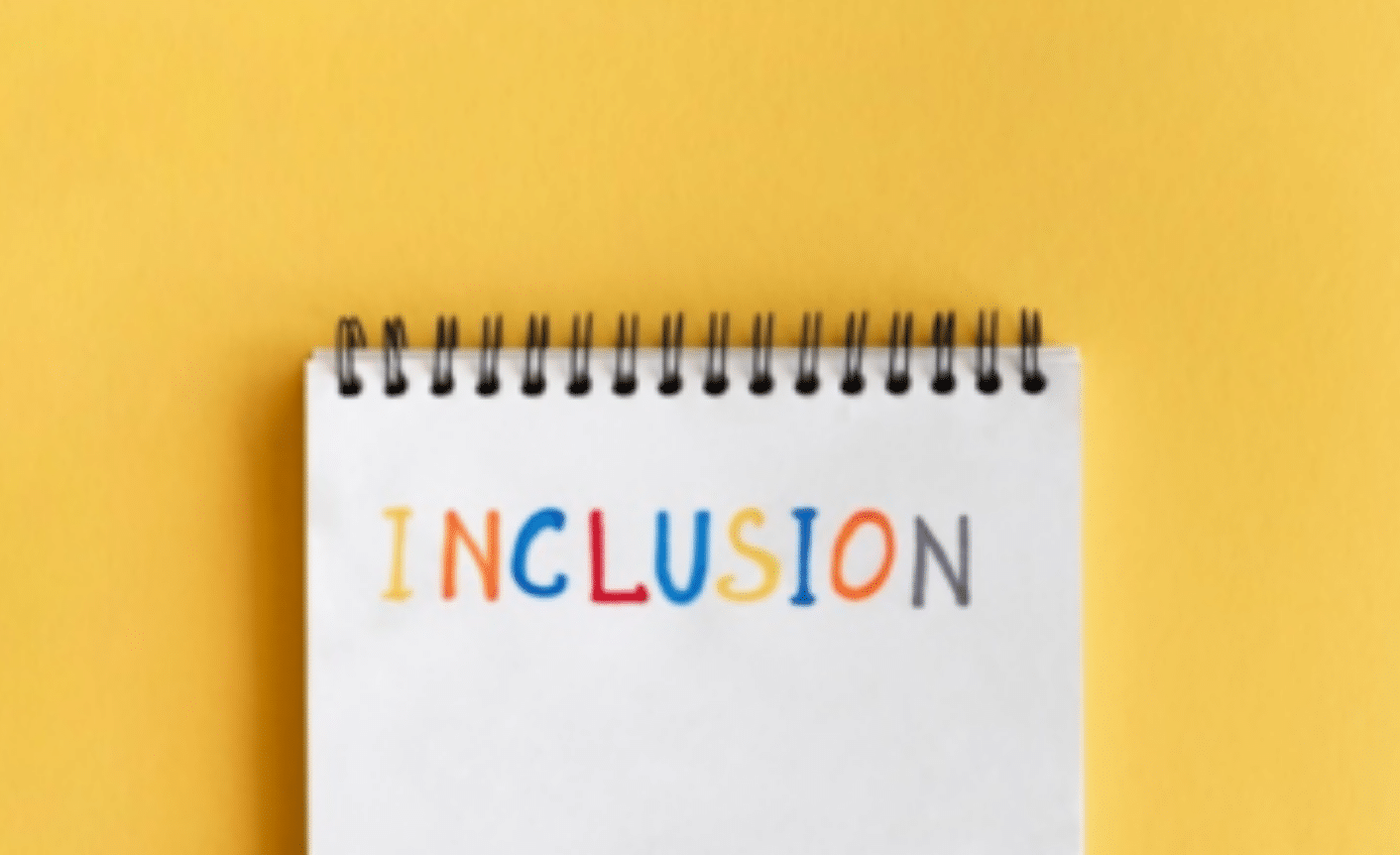
“Words do have power. Names have power. Words are events, they do things, change things.” Ursula K. Le Guinn
How AI text enhancers can improve inclusive language
Let’s open this blog with a bold statement. Ready? Here goes: The current inclusive language definition isn’t serving diversity, equity, and inclusion as well as it should. Nor is it helping build inclusive organizations.
And why’s that, you ask? First, let’s look at the current definition, critique it, and then see if we can tweak it a little so it serves growth and flourishing – both in a personal and business context.
The current inclusive language definition
When we talk about inclusive language, it’s usually in the broader context of diversity and inclusion.
You can view inclusive language from:
- An inward perspective — how does a company talk to and about its employees or candidates?
- An external perspective — how does a company brand itself and address customers and the wider public?
If we look at the current, slightly more generic definitions of inclusive language, they go something like this:
| Inclusive language aims to treat people with respect and avoid offense. It does that by avoiding words and certain expressions that exclude, stereotype, discriminate, or assign negative connotations to personal characteristics of certain people and communities. |
Just to be clear, personal characteristics refer to someone’s gender, pronouns, nationality, religion, marital status, disability, skin tone, migration status, age, political beliefs, family structures, sexual orientation, socio-economic background, ethnicity, geography, interests, and more.
Expanding inclusive language with AI content improvers
When I hear people talk about what inclusive language is, I notice that many versions talk about what inclusive language avoids doing. I also notice that there’s a message around inclusive language in the workplace that’s based around mitigation of risk, fear of saying the wrong thing, the risk of a media scandal, loss of reputation, etc.
That’s not wrong, but when Acrolinx surveyed and interviewed employees from more than 50 global companies, all but one reported egalitarian reasons for implementing inclusive language. That says to me that companies have more noble intentions than simply avoiding offensive language. To me, it begs for an inclusive language definition that better captures the commitment towards an intentional, inclusive use of language.
So how are companies tackling non-inclusive language? Mostly by making lists or guidelines of what not to say, and what to say instead. People ask us all the time “What words should I be avoiding now?” Instead of “What’s the best way to have an inclusive conversation?” Here’s a summary of why it makes sense to expand on the current definition of inclusive language.
- When we’re so focused on words, we might forget that we’re talking about real people and their lives.
- Focusing heavily on censorship can lead to a mistake-tolerant culture that’s counterproductive to relationship building and ongoing inclusivity education.
- It doesn’t describe the benefit of inclusive language for all people.
- When we only talk about what it avoids instead of what it adds in conversation, we may position identity groups as liabilities or a risk to manage.
- It can make it feel like an “extra thing to do” instead of something that’s centered around human connection and therefore incredibly rewarding.
It led me to wonder what would happen if we extended the focus of inclusive language to emphasize the good it’s creating, instead of just the risk we’re avoiding.
Introducing AI-powered text enhancers for inclusive language
We can choose to see inclusive language as more than a compliance issue, or something that belongs solely within the HR department. In fact, many organizations say they see it as another helpful tool to respond to societal shifts, and deliver better business outcomes while doing so.
Inclusive language isn’t another box to check in our content like good spelling or correct grammar – it’s to be paired with a sustainable, broader diversity and inclusion strategy. Ideally, it’s also something that people feel intrinsically motivated to learn and practice, because it feels good to foster better connections with our fellow humans.
Much like learning a second language, inclusive communication can feel empowering because it makes your world bigger. If a second language can expand your world, so you can feel a sense of accomplishment ordering coffee in a new language, improve your business opportunities, or raise your children with connection to multiple cultures — so too can inclusive language.
So from that, I propose a new and improved definition. Perhaps you’d even call it a manifesto.
Inclusive language is a collaborative communication style — not only a list of terminology.
It signals to historically excluded people and communities that they’re safe to be themselves, that we’re working to create greater equity, and supporting them to flourish.
Inclusive language symbolizes acceptance, allyship, and a commitment to seeing human differences through a lens of collaboration and a catalyst for growth – not as a basis for conflict.
It’s a gift to the world because it gives us more ways to describe the beauty and complexity of authentic human expression, while promoting belonging for all people.
Inclusive language is transformative. It has the power to amplify diversity, equity, and inclusion. Inclusive language can be compassionate, powerful, and authentic — and it’s never been more important. It’s a conversation that’s dynamic and works closely with the people we’ve typically excluded from that conversation. It’s centered in understanding the history of where certain words and phrases originate, and requires both empathy and bravery to confront our implicit biases.
Learning from mistakes: Using AI to improve content quality
Let’s talk about mistakes, because they’re inevitable!
Approaching inclusive language from the perspective of educating ourselves, instead of censoring ourselves and others is important. Because censoring language or controversial ideas creates a mistake-intolerant culture that gets in the way of the learning and relationship-building that’s necessary for inclusive workplace culture.
Education around inclusive language acknowledges that everyone is starting from a different place. Some people feel comfortable avoiding stereotypes, but need help navigating pronouns and language surrounding gender. It’s also important, because without the educational component, inclusive language initiatives won’t be sustainable and are less likely to update themselves as language evolves.
We’ll go into it more, but technology can assist in making writers aware of non-inclusive language, and provide helpful feedback without judgment.
The role of AI in enhancing inclusive language
Technology can be a great assistant to help educate teams about inclusive language, especially in a professional setting. Because of the inevitable mistakes and need to change habits, inclusive language technology can be a provider of consistent, objective feedback. It helps writers build awareness of the words they choose, and the effect they have on others.
As I said earlier, education is critical for lasting change. Technical solutions for inclusive language are also scalable, which means you can reach more people, and most of the time, people feel more comfortable making mistakes and having technology correct them, rather than another person.
How Acrolinx’s AI text enhancer supports inclusive language
Acrolinx is an AI-powered content governance software that improves the quality and effectiveness of enterprise content. It also has an inclusive language solution that can check if your company uses inclusive language, across almost all your departments and content types.
We built our inclusive language solution guided by:
- Social organizations: Following recommendations based on organized information from diversity groups.
- Educational research: Reviewing published research from respected universities across the globe.
- National influence: Including guidelines from the United Nations and other government alignment agencies.
Acrolinx helps scale the essential parts of your diversity and inclusion initiative — by providing educational guidance and reporting on the use of inclusive language in content.
If you’d like to see the Acrolinx Inclusive Language Feature in action, check out the latest demo video . An example of the kind of feedback you’d receive with Acrolinx Inclusive Language checks would be:
Historical context: Feedback on the history that certain words have.
Intentional use: Referring to personal traits only when necessary and using person-first language.
Accessible to all: Guidance on clear language that considers non-native English speakers.
Fair job descriptions: Gender neutral language that’s inviting to all applicants.
Need help with understanding all the different aspects of inclusive language? Check out The Quick Guide to Inclusive Language, or download the full-length Acrolinx Inclusive Language Guide.
Celebrating diversity: The foundation of inclusive language
Diversity is everywhere and describes humanity as a whole. You can’t describe an individual as “diverse” on their own, but when they contribute to the larger group that makes up humanity, their uniqueness contributes to the world’s diversity.
Inclusive language gives a more accurate view of the real world because it recognizes diversity. Words can either strengthen or weaken the quality of connection with other people. Which is why they’re an important part of creating a flourishing workplace culture where everyone feels respected and valued.
What if you could watch an award-winning, 18 minute keynote presentation on how inclusive language helps people flourish? Well, you can! Head over to Brighttalk to register for a replay of “Words Can Shape the World: How Inclusive Language Supports DEI” at the 2021 AmplifyDEI virtual summit.
Are you ready to create more content faster?
Schedule a demo to see how content governance and AI guardrails will drastically improve content quality, compliance, and efficiency.

Kiana Minkie
She comes to her content career from a science background and a love of storytelling. Committed to the power of intentional communication to create social change, Kiana has published a plethora of B2B content on the importance of inclusive language in the workplace. Kiana, along with the Acrolinx Marketing Team, won a Silver Stevie Award at the 18th Annual International Business Awards® for Marketing Department of the Year. She also started the Acrolinx Diversity and Inclusion committee, and is a driving force behind employee-driven inclusion efforts.





